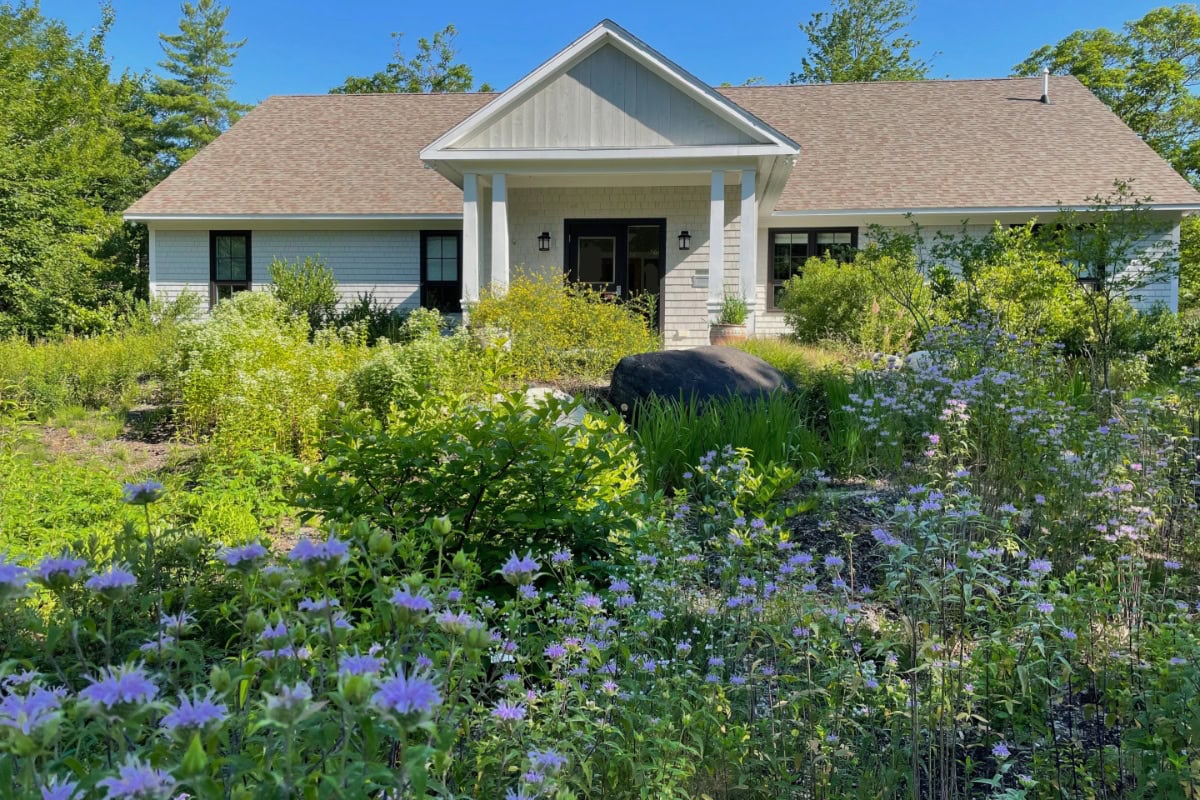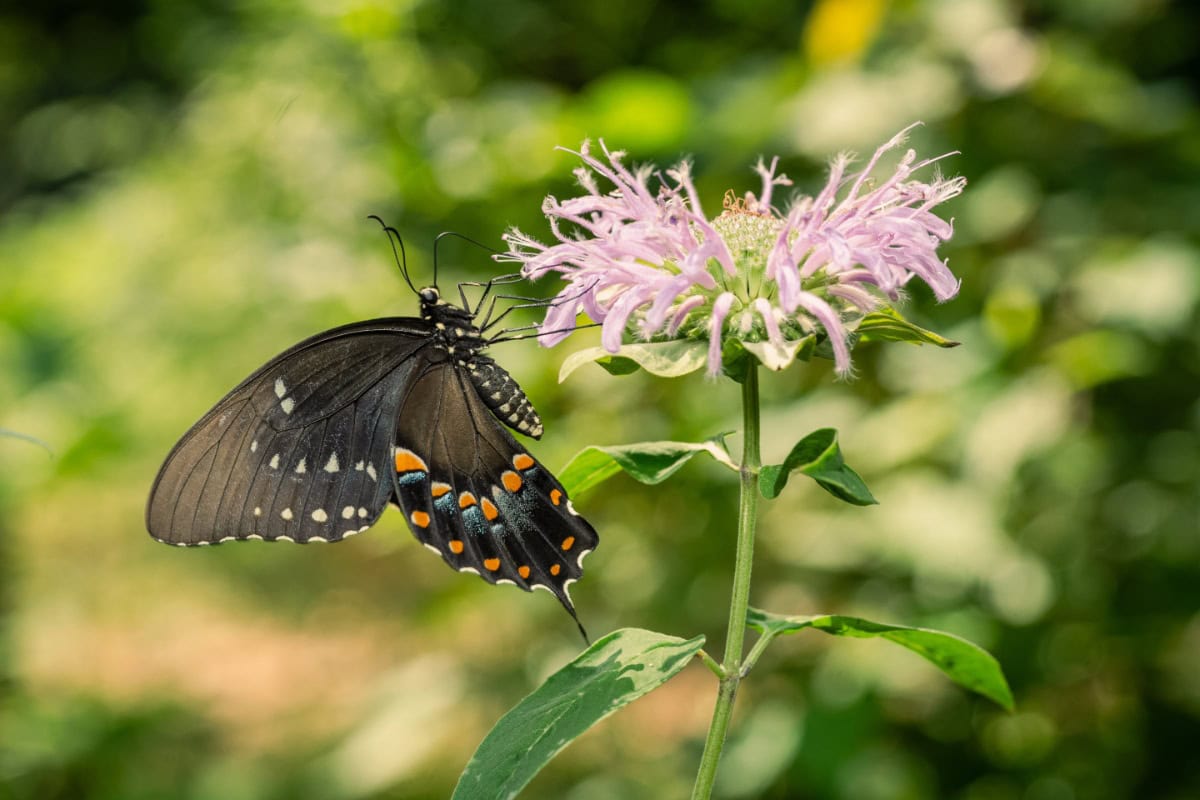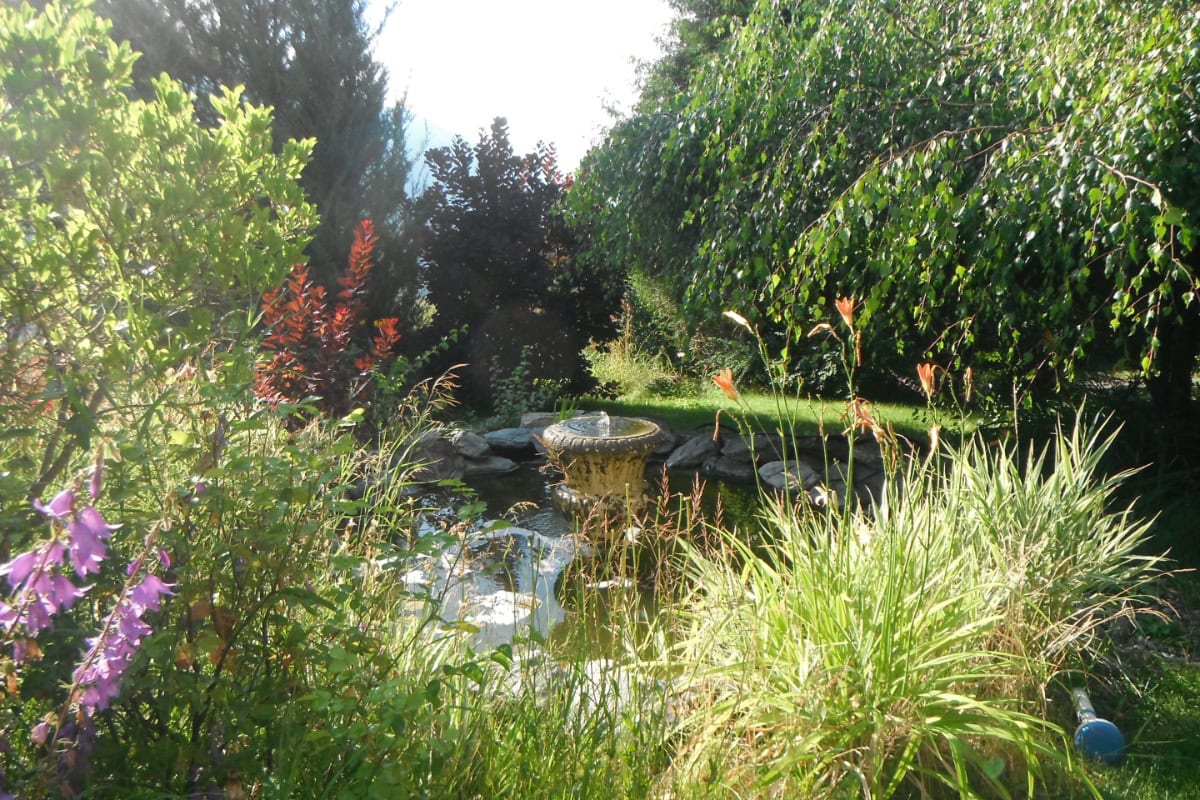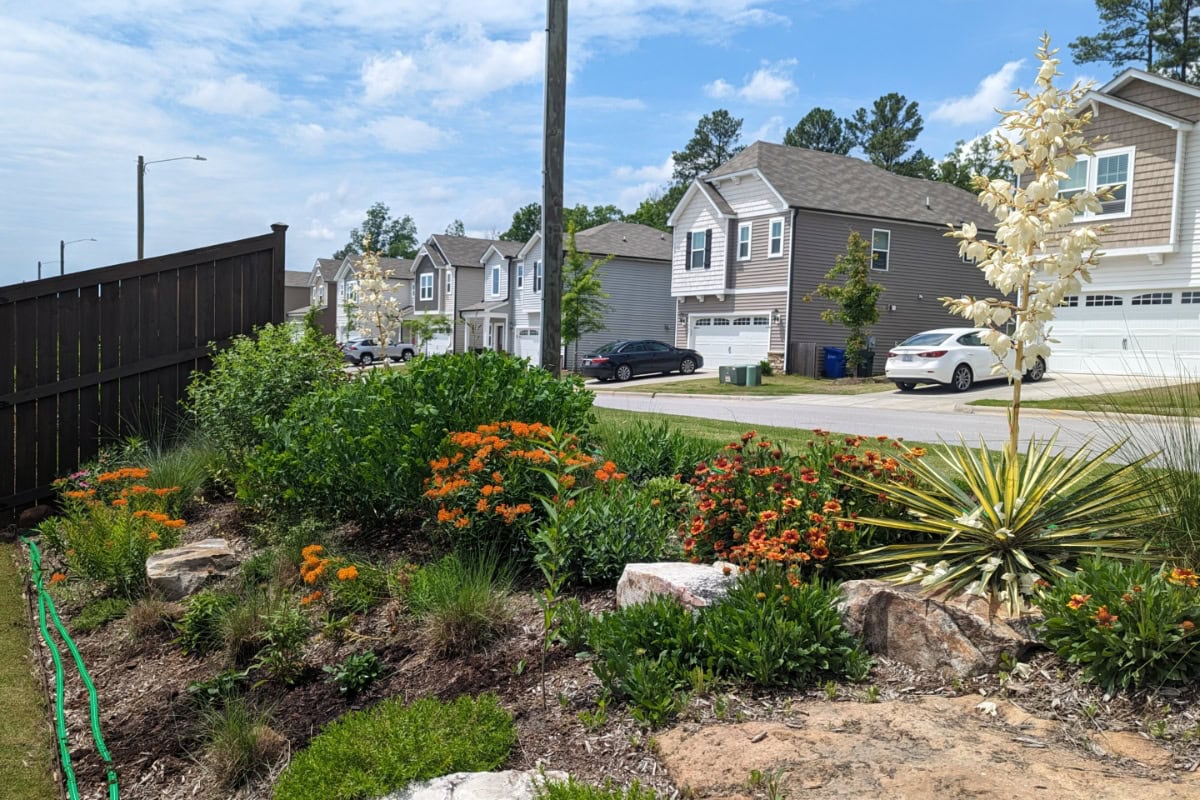
In a world dominated by urban landscapes and monoculture gardens, the call for biodiversity has never been more urgent, and one of the first steps is creating an eco-friendly yard. Increasing biodiversity in your home and yard is not only a step toward environmental sustainability but also a way to cultivate a diverse, dynamic ecosystem right at your doorstep. By embracing native plants, sustainable practices, and a variety of habitats, you can transform your outdoor space into a thriving refuge for wildlife.
This Redfin article explores strategies recommended by experts for creating an eco-friendly yard that supports local flora and fauna, your connection to nature, and enhances your home appeal. If you’re exploring ways to enhance your home with an eco-friendly yard, consider checking out Redfin for properties that offer ample outdoor space perfect for gardening. For those thinking about a change, ApartmentGuide provides listings that may include eco-conscious apartments with access to community gardens or nearby parks, allowing you to enjoy nature without a sprawling backyard. Even renters can join the movement — Rent has rental home options that feature outdoor areas ideal for starting your biodiversity project.
First, rethink the grass lawn
As Sarah Burrows co-founder of Modern Sprout says, “Grass lawns are highly overrated — they consume lots of water, often require nasty chemicals, and do little to support biodiversity. Transitioning away from a grass lawn may seem overwhelming, but starting small can make a big impact: Try dedicating just a 10-square-foot strip along the edge of your yard to native plants! Native plants are not only low-maintenance but are also powerful allies for biodiversity, attracting and supporting local wildlife with food, shelter, and breeding spaces. Incorporating a mix of native shrubs, flowering plants, grasses, and trees creates a self-sustaining habitat that supports both local ecosystems and enhances your own well-being by reconnecting you and your home to the natural world.”
Luckily, as Jordan Felber from The Landscape Library shares, “The landscape industry is seeing a shift in residential garden design, changing from a manicured landscape to a more wild-style garden with multi-functional plant benefits such as edible landscapes that not only feed the wildlife but also provide benefits inside the home.
Landscapes that utilize a variety of native plant species with different blooming patterns throughout the year, often achieve greater biodiversity and are more resilient to environmental stresses like drought, pests, and diseases. Creating a balanced ecosystem within the landscape requires less human intervention and promotes long-term sustainability, ultimately decreasing maintenance for homeowners.”

Nature’s neighbors: Attracting backyard wildlife
One of the most rewarding aspects of cultivating an eco-friendly yard is the opportunity to support local wildlife. Incorporating elements that attract beneficial species can lead to a thriving ecosystem. To do this, Lindsay Brown of LB’s Sustainable Garden Care recommends, “Create a wildlife habitat by stacking piles of wood and branches in a corner of your property for small creatures to seek refuge. Install a mason bee nest or wooden pollinator house for beneficial insects to make their home.
Create a small pond in your garden that provides a habitat for dragonflies, frogs, and amphibians. This can be as simple as using an old wash basin or half a barrel and stacking rocks inside to create different depths then adding small aquatic plants. Even the addition of a simple bird bath that is kept replenished provides essential water for wildlife including birds and beneficial insects. Implementing just one of these ideas will improve biodiversity and enhance your outdoor space greatly.”
Oliver Lewis, founder of Joe’s Blooms adds, “Install bird boxes, bat roosts, and/or insect hotels. Artificial bee nesting boxes and habitats for wildlife, also known as bug hotels, can provide important refuges, nesting sites, and overwintering locations for a variety of invertebrates. These can be bought or created at home using natural materials. The right placement and secure installation are crucial. On top of this, a bird feeder or nest box is a great addition to any outdoor space, even a balcony!
There are so many things you can add – maybe think about installing a bat box, hedgehog house, or bug hotel. These will offer invaluable shelter for various species, particularly during the colder months. If you have a fence, consider adding a hedgehog hole. And don’t underestimate the huge impact some water can have (if space is tight, an old washing-up bowl can serve as an excellent mini pond).”
Naomi Stein V.P. of Alta Vista Botanical Gardens shares how she creates a wildlife habit at her home. “An eco-friendly outdoor sanctuary welcomes wildlife by creating habitats and food sources for birds, bees, reptiles, and small creatures. Your garden should include: A water supply such as a birdbath, water features, and low-water bowls. Small piles of rocks, sticks, or logs for hiding places. Trees for shade, cover, and nesting. Compost pile and mulch.”
Wyatt of My Home Park shares, “Simple features like bird baths, bee hotels, bat houses, and brush piles can quickly become sanctuaries for beautiful and benign wildlife. Not only will your yard come alive with birds, butterflies, and beneficial insects, but it will also develop a unique aesthetic that reflects the natural beauty of your region.”
If you are concerned about bugs, Jane Frost of Jane Grows Garden Rooms Blog wisely notes, “One of the most effective ways to promote biodiversity in your backyard is to suffer through the ‘bug stage.’ When the bugs come, grit your teeth and wait. Essentially you’re creating a banquet for predator species like lacewings, birds, and mantises. Soon enough you’ll see them turn up and feast, giving you free pest control and biodiversity aplenty!”
Additionally, water can be used for interactive elements in your backyard. Blogger Sue Senger of The Naturalized Human says, “Don’t forget to add a splash of water! A water-filled pebble tray or bird bath will quickly attract local butterflies and birds, turning your space into an oasis of color and sound that you want to spend time in. My birdbath/fountain and pond on my farm attract flocks of migrating birds each year. The sound of water created is highly attractive.
Wissahickon Trails conservation manager, Margaret Rohde adds, “Birds and other wildlife are always seeking water. You can help them by setting out a bird bath or something as simple as a small dish filled with clean water. Butterflies will also stop by for a drink – just be sure to give them something to perch on by adding rocks (or colored beads) and keep the water a bit shallower.”
Alexander Betz, landscape designer of Plant by Number also shares, “A water feature, such as a small birdbath, can be a great addition to attract wildlife to your garden by providing water for drinking and bathing. Not only does it serve as a vital resource for birds and other creatures, but it also creates a tranquil focal point in your landscape. The gentle sound of water enhances the sensory experience of your garden, drawing in wildlife and adding an element of serenity.”
By allowing nature to take its course during this initial phase, you set the stage for a balanced ecosystem. Installing birdhouses, bat boxes, and providing water sources can further encourage these beneficial predators to make your yard their home. The presence of these species not only helps control pests naturally but also enhances the overall biodiversity of your outdoor space.

Choosing the right plants for enhancing biodiversity
Selecting the right plants is crucial for creating biodiversity and crafting a more eco-friendly yard. As Nicki Copley from Landscape Architecture Built highlights, “Providing habitat for local biodiversity in your yard is not only environmentally beneficial but also a fun and rewarding project. The first step is to be purposeful with the plants you choose. Do a little research before heading to your local nursery to determine which plants will best provide habitat for local insect populations and suit your garden’s conditions i.e. sun, climate, water, etc. The National Wildlife Federation’s Plant Finder can help with this, and the Xerces Society also offers plant lists for pollinators and beneficial insects.
Planting a variety of plant species is beneficial too. Instead of mass planting, aim for a diverse selection that blooms at different times throughout the year. Plant clusters of the same plant in multiple spots to create a cohesive planting scheme. Finally, if your planting is diverse and dynamic, keep hardscape materials simple and avoid busy or complex detailing to provide a contrast with the planting.”
Alice Sturm, Nature Forward’s Director of Restoration adds, “Be a good neighbor to nature. Native wildlife needs native plants! By using plants indigenous to your region, you can provide nectar, seeds, nuts, fruits, berries, foliage, and pollen to wildlife from butterflies to songbirds.
In the Mid-Atlantic region where Nature Forward is based, some of our wildlife hero plants are butterfly weed (Asclepias tuberosa), which supports Monarch butterfly caterpillars, Threadleaf Mountain mint (Pycnanthemum tenuifolium), which is a favorite for bumblebees (but not deer or rabbits!), and Virginia sweetspire (itea virginica) which is a great shrub for foundation plantings or screening, tolerates sun to shade, and has both flowers for pollinators and seeds enjoyed by birds. The specific plants that work in your area may be different, but with plants native to your state or region you can have a grow-your-own birdfeeder, provide beauty for your yard, and habitat for birds and butterflies all at the same time.”
Sheldon Galloway, owner of Garden Environments, highlights, “The best plants for your home landscape are plants that are native to your local area or region – bonus points for plants that are considered keystone species in your region! Native plants have evolved to thrive with your specific climate, soil type, and weather conditions, which makes them a better investment than plant species that aren’t native to where you live.
Transforming even a small portion of your landscape from a bare lawn with no wildlife value to a vibrant space teeming with native plants provides local insect and bird populations with food and habitat, and many of our clients are thrilled with the number of birds, butterflies, bees, and other pollinator species that they see around their properties once they start to make this change. Flowering perennials and native trees and shrubs can still check all the boxes for HOA or community requirements, and a beautiful native landscape will improve your home’s value while benefiting the environment.”
Wasco Nursery & Garden Center share their picks for preferred plant species, “Native trees and shrubs like the Eastern redbud, viburnum, and serviceberry not only add color and interest throughout the seasons but also support local wildlife. In addition to these, native perennials like milkweed, beebalm, and coneflowers attract a variety of pollinators, which are vitally important for a healthy ecosystem.”
Scott Lawn’s owner of Greenway shares that, “In San Diego, milkweed (“narrowleaf milkweed” – asclepias fascicularis), which is a must for monarch butterflies, provides both food and a place to lay eggs between February and May. Salvia (“white sage” – salvia apiana) and (“Cleveland sage” – salvia clevelandii) or verbena (“Cedros Island verbena” – verbena lilacina) are also popular choices, that offers nectar to hummingbirds, butterflies, and bees. Additionally, pentas (“Egyptian starcluster” – pentas lanceolata) and lantana (lantana camara) are great options for continuous blooms that support a wide range of pollinators throughout the year and enhance the beauty of your outdoor living spaces and gardens.”
Another great tip comes from Montgomery Robbins, Inc. stating, “Knowing how plants interact with surrounding environments allows for a beautifully thriving, biodiverse landscape for wildlife and people alike. Here at Montgomery Robbins, Inc., plants are chosen with their specific uniqueness in mind. Using lomandra allows for fullness to be incorporated into a space while keeping water usage and maintenance to a minimum. Plants like marine blue germander sage are also drought tolerant but are often incorporated due to their attractive blue color and magnetism for bees, butterflies, and hummingbirds.”
Choosing the correct plan species is crucial when creating your garden. Morgan William Graham from the Teton Conservation District shares additional information on making the correct choices.
“It’s important to tap into local resources like your county’s extension office or conservation district for native plant recommendations. A quick internet search for “native plants of [your state or county]” will reveal an increasing number of resources, including national databases and local native plant sales tailored to your area. Be wary of state or regional “wildflower mixes” — they all too often include species from other continents that may look pretty but can be ecologically disruptive or harmful. Instead, research plants using scientific names to ensure you’re truly planting locally native species.”
When designing a biodiverse garden and eco-friendly yard, recognize that beauty and interest can come from more than just flowers. David Griffard of Stroke of Nature Design notes, “Textures and varying leaf colors in the landscape are just as important as flowers. Incorporating things like succulents and grasses is a great way to add interest to the landscape without relying solely on flowers. Many succulents and grasses are also drought tolerant and easy to maintain, saving you on irrigation costs and time working in the garden. I like to incorporate plants like agave ‘nova’ and lomandra ‘breeze’ as my structural plants in spaces to give them year-round interest.”
Meghan Anderson from Little Things Garden Design LLC, adds, “In particular, adding native grasses or sedges should be a critical part of your planting strategy. While often overlooked in favor of flowering plants, grasses add important habitat and food for wildlife, as well as additional texture and dimension, to your plantings.”
Dr Burno Marques of the International Federation of Landscape Architects agrees with Meghan stating the importance of layering. “Create a multi-layered landscape with trees, shrubs, and ground cover to maximize biodiversity and visual interest. This thoughtful arrangement not only enhances the aesthetic appeal of your garden but also encourages a variety of wildlife to thrive. By integrating different plant heights and textures, you establish distinct habitats that support birds, insects, and other beneficial creatures.”
Amy Kowalski from Healthy Lakes WI suggests an alternative way to produce your biodiverse garden or eco-friendly yard. “Wisconsin’s Healthy Lakes & Rivers Initiative includes 5 simple and inexpensive best practices that improve habitat and water quality while also protecting your shoreland property. But you don’t need to live on a lake or river to create a resilient backyard! Move rainwater from your driveway, patio, or downspout with a DIVERSION to a beautiful RAIN GARDEN that will help to capture and clean runoff, or increase natural beauty and privacy while creating wildlife habitat with a native planting! Find out what plants are native to your area and make sure to include trees, shrubs, and grasses along with your wildflowers.”
While planting native species is essential for boosting biodiversity, the integration of hardscaping elements can enhance both functionality and aesthetics in your yard. Hardscaping refers to the non-plant elements of landscape design, such as patios, walkways, retaining walls, and other structures.
As noted by Bobby K Designs, “We incorporate native plants like coneflowers and prairie grasses to attract local wildlife and reduce maintenance needs. By blending structure with nature, you create an inviting outdoor space that’s both functional and beautiful. Simple additions like birdbaths or pollinator-friendly gardens enhance biodiversity while complementing hardscape elements. This approach not only adds aesthetic value but also supports local ecosystems, making your outdoor space more sustainable.” When thoughtfully incorporated, these features can create a harmonious balance between built environments and natural landscapes.

Chemical-free gardening: Nurturing nature naturally
Creating an eco-friendly yardis fundamentally about fostering a balanced ecosystem, and one of the most impactful choices you can make is to avoid chemical pesticides and fertilizers. Chemicals may offer quick fixes for pest control and plant health, but they often come at a cost to the very biodiversity you seek to promote.
As Wissahickon Trails conservation manager, Margaret Rohde, shares, “Things like fertilizers, herbicides, and pesticides can be very harmful to wildlife, particularly insects and birds, so it’s best to avoid using them or at least limit them where possible. Indigenous plants will not need chemicals to thrive, and they will attract beneficial insects that will help control the bad bugs! And if you leave your leaves, there will be no need to fertilize your lawn in the spring.”
An alternative to using chemicals comes from Rachel Emus of Native Gardens of Blue Hill when she highlights, “On-site composting of plant materials, leaves, and kitchen scraps can save homeowners money while providing a nutrient-rich resource for their gardens. For instance, instead of disposing of fallen leaves, you can rake them into your garden beds or create compost piles. Leaves are packed with nutrients essential for trees, plants, and beneficial soil organisms. As they decompose, they gradually release nutrients and micronutrients that are often absent in commercial fertilizers. Additionally, leaves help retain moisture, regulate temperature extremes, and prevent soil erosion.”
When you avoid chemicals, your garden may not appear as pristine, but it will thrive as a more natural and vibrant ecosystem. As Kathi Raun Hromas Blazer of the Tulsa Garden Club states, “A perfect garden doesn’t mean perfect plants. Avoiding insecticides means you will see bites taken and leaves removed by bugs, etc. it means they need to eat too, and are part of a healthy biodiversity. I smile now when I see those. ”
This post first appeared on Redfin.com. To see the original, click here.
